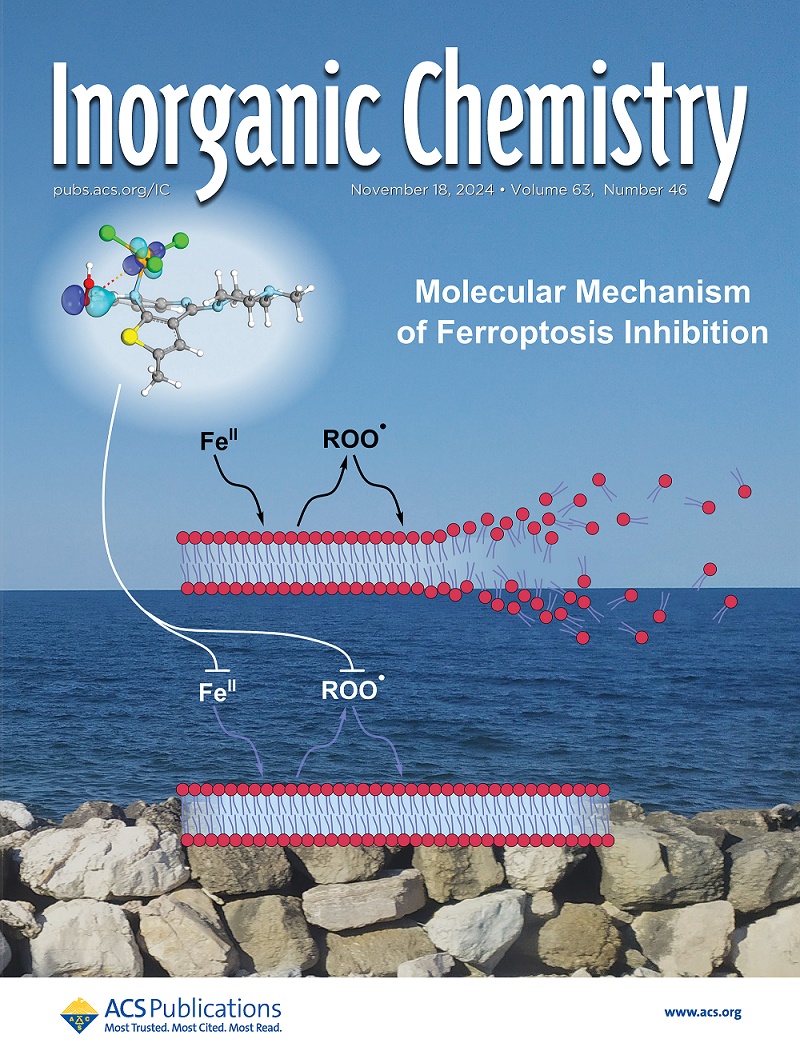稀土金属配合物与吲哚-2基配体在三齿和四齿键模式下催化开环均聚和共聚rac-丙交酯和δ-戊内酯
IF 4.7
2区 化学
Q1 CHEMISTRY, INORGANIC & NUCLEAR
引用次数: 0
摘要
rac-乳酸酯(rac-LA)和δ-戊内酯(δ-VL)共聚物可以改善单体聚合物的力学、热、渗透性和降解性能。然而,由于中间体在传播过程中的活性不同,以及对实现共聚的催化过程缺乏了解,金属催化剂催化这两种单体的共聚面临挑战。本研究以较好的收率合成了一系列新型吲哚-2-酰基NNC钳型稀土金属二烷基配合物(κ3NNC-L)RE(CH2SiMe3)2 (RE = Lu(1a)、Yb(1b)、Er(1c)、Y(1d)、Dy(1e)) (L = 1-(Me2NCH2CH2)-3-((Me2NCH2CH2)MeNCH2)- c8h4n)和碳基稀土金属环(κ 4nncnn -L)RE(η - c2b10h10) (RE = Lu(2a)、Yb(2b)、Er(2c)、Y(2d)、Dy(2e))。这些配合物在rac-LA和δ-VL的均聚反应中表现出较高的活性。值得注意的是,在配合物1和2存在的情况下,通过控制两种单体的投料顺序,首次描述了金属配合物引发δ-VL和rac-LA的高效嵌段共聚过程,而利用配合物1和2作为催化剂也可以实现δ-VL和rac-LA的无规共聚。本文章由计算机程序翻译,如有差异,请以英文原文为准。
Catalytic Ring-Opening Homopolymerization and Copolymerization of rac-Lactide and δ-Valerolactone Utilizing Rare-Earth Metal Complexes with Indol-2-yl-Based Ligands in Tridentate and Tetradentate Bonding Modes.
The copolymers of rac-lactide (rac-LA) and δ-valerolactone (δ-VL) can improve the properties of the individual polymers in terms of variable mechanical, thermal, permeability, and degradation properties. However, copolymerization of these two monomers catalyzed by metal catalysts faces challenges due to different activities of the intermediates in the propagation processes and lack of understanding the catalytic procedures to realize the copolymerization. Here, a series of novel indol-2-yl-based NNC pincer-type rare-earth metal dialkyl complexes (κ3NNC-L)RE(CH2SiMe3)2 (RE = Lu(1a), Yb(1b), Er(1c), Y(1d), Dy(1e)) (L = 1-(Me2NCH2CH2)-3-((Me2NCH2CH2)MeNCH2)-C8H4N) and carboryne-based rare-earth metallacycles (κ4NNCN-L)RE(η2-C2B10H10) (RE = Lu(2a), Yb(2b), Er(2c), Y(2d), Dy(2e)) were synthesized in good yields. These complexes exhibited high activity in homopolymerization of rac-LA and δ-VL. Notably, highly efficient block copolymerization procedures for the copolymerization of δ-VL and rac-LA initiated by metal complexes were for the first time described by controlling the sequence of feeding the two monomers in the presence of complexes 1 and 2, while the random copolymerization of δ-VL and rac-LA can also be realized by utilization of complexes 1 and 2 as catalysts.
求助全文
通过发布文献求助,成功后即可免费获取论文全文。
去求助
来源期刊

Inorganic Chemistry
化学-无机化学与核化学
CiteScore
7.60
自引率
13.00%
发文量
1960
审稿时长
1.9 months
期刊介绍:
Inorganic Chemistry publishes fundamental studies in all phases of inorganic chemistry. Coverage includes experimental and theoretical reports on quantitative studies of structure and thermodynamics, kinetics, mechanisms of inorganic reactions, bioinorganic chemistry, and relevant aspects of organometallic chemistry, solid-state phenomena, and chemical bonding theory. Emphasis is placed on the synthesis, structure, thermodynamics, reactivity, spectroscopy, and bonding properties of significant new and known compounds.
 求助内容:
求助内容: 应助结果提醒方式:
应助结果提醒方式:


